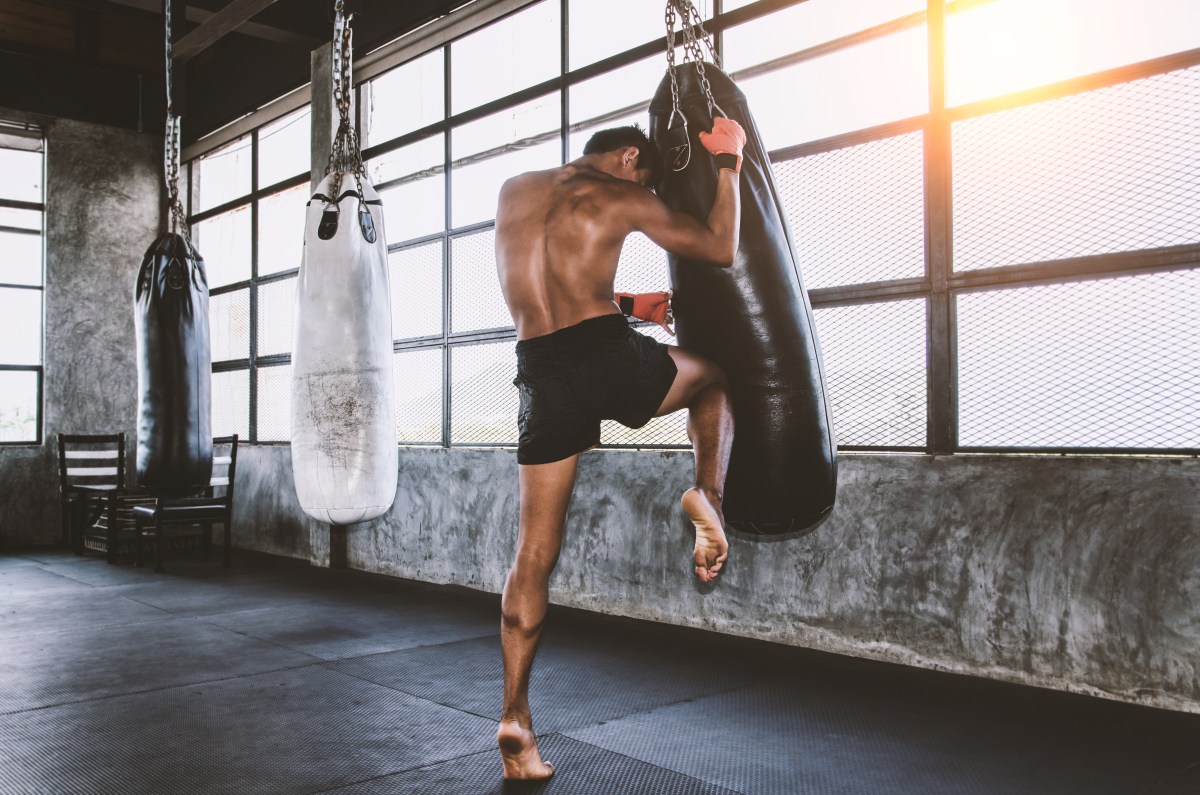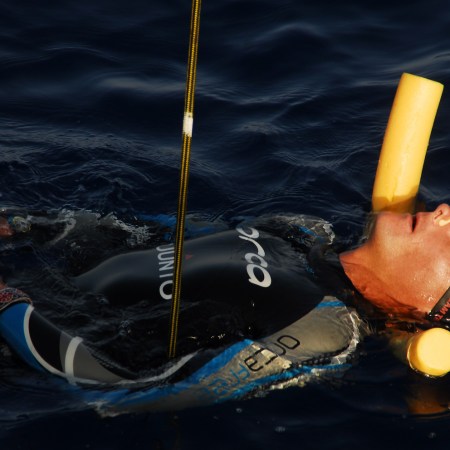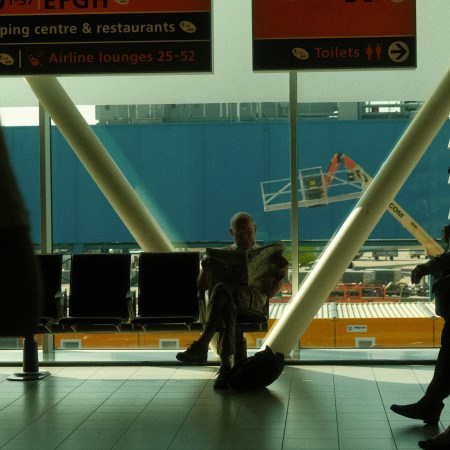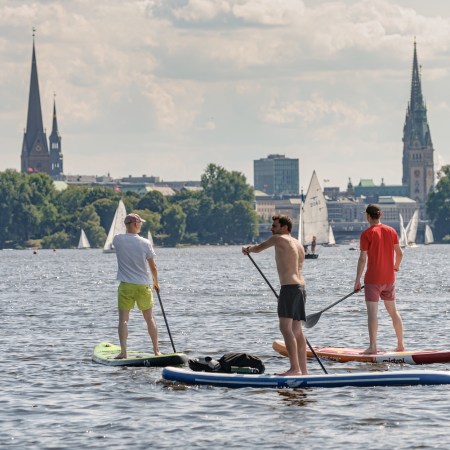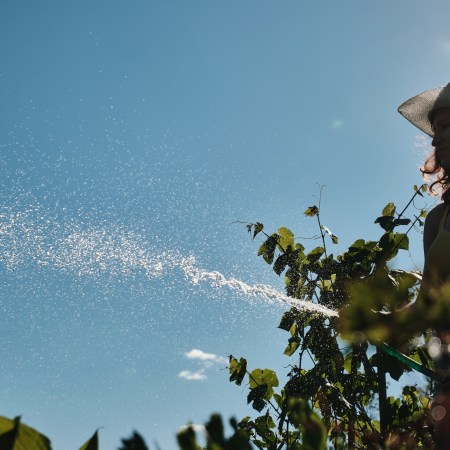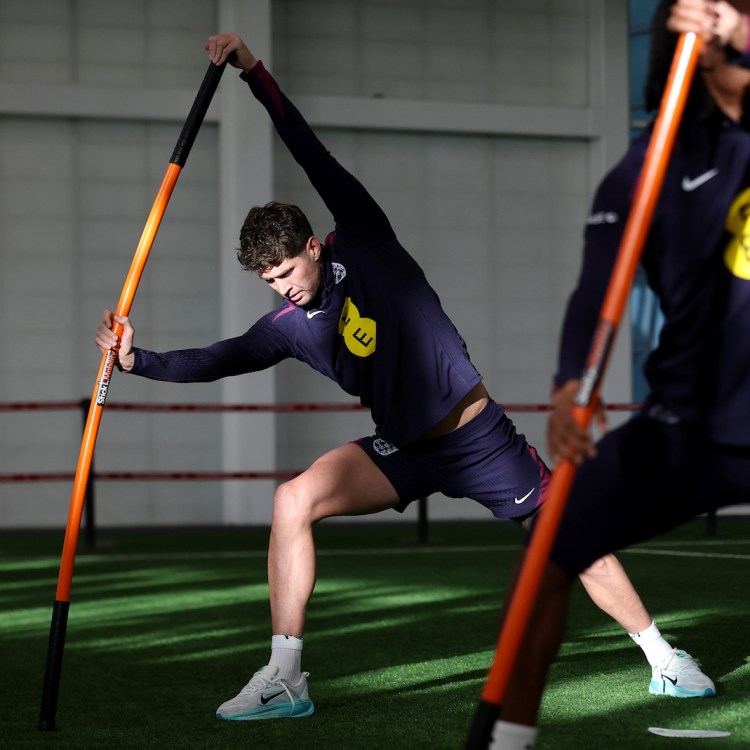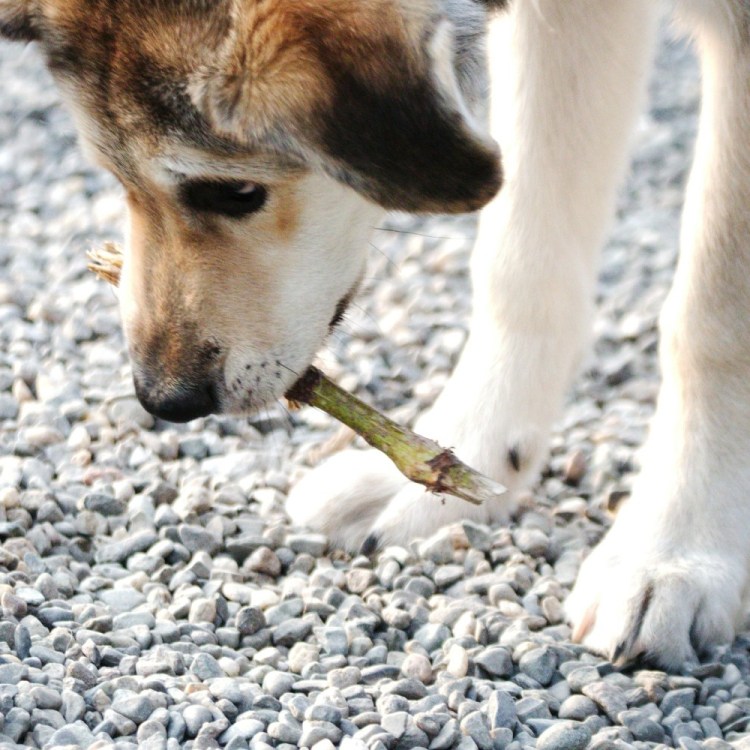Back in 2006, John Wolcott was a 20-year-old suffering from a herniated disc. His doctor ordered him to strengthen his core muscles, but he found conventional weight-lifting gyms flat and uninspiring.
“I did some research and somehow came across the sport of Muay Thai,” he says. “All the fighters looked shredded, like their abs were chiseled from stone. If Muay Thai couldn’t help me strengthen my core, I thought nothing would.”
The decision altered the course of his life — Wolcott trained at a few Muay Thai gyms in New Jersey for a few years, then lapsed for a bit after buying a house. He came charging back to the practice after he saw a photo of his friend on the other side of the world, training with the legendary Yodtong Senanan in Thailand’s Sityodtong Gym.
“I immediately regretted stopping Muay Thai,” Wolcott remembers. He booked a flight to Thailand to train at Kaewsamrit Gym, in Bangkok.
“There is no other combat sport that I know of where you can show up at a gym and pay to train with the best fighters in the world. In MMA, you can’t just show up to Jackson Wink MMA and pay twenty bucks to train with Jon Jones. In boxing, good luck sparring a few rounds with Floyd Mayweather. In Muay Thai, you still have access to the legendary trainers and fighters.”
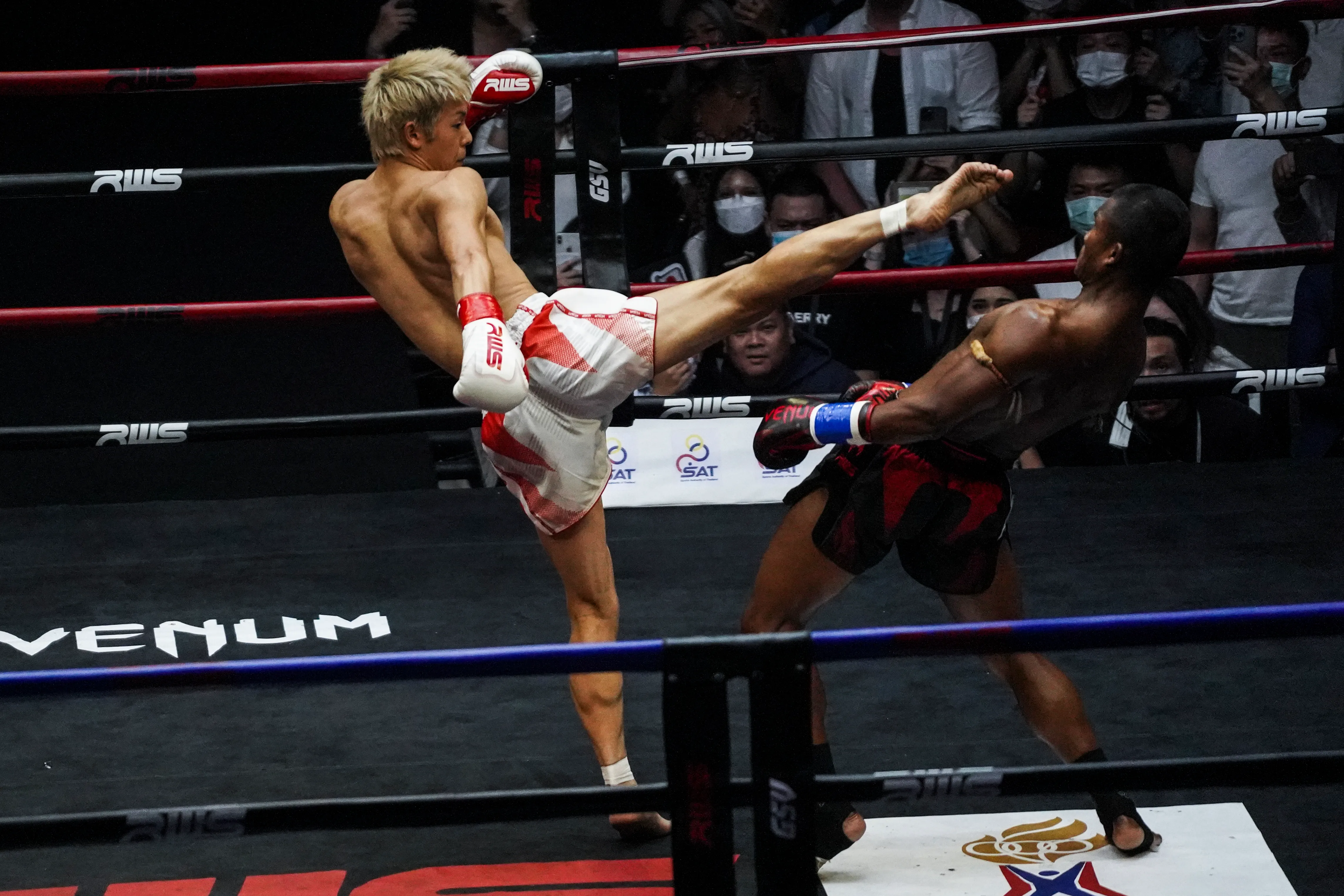
These days, Wolcott has put down roots in Thailand. He has a family there, he’s filmed documentaries about Muay Thai there and he’s cemented a career there — as an English commentator for Muay Thai bouts, which carry a crackling passion that he describes as unmatched in any other spectator sport.
“In traditional stadium Muay Thai with five rounds, the gamblers cheer in unison for their fighter, and it creates this wave of energy that rolls across the stadium. When a fighter lands a hit, the gamblers cheer in short bursts at the same time. Dee! Dee! Deeeee!”
Those hits can be menacing. “The sport is a paradox,” Wolcott says. “Beautiful and brutal at the same time. Fighters practice the same technique thousands of times until they master it. When they use it in the ring, it’s near-perfect — fluid, effortless, like a master oil painter working a paintbrush. But that makes it all the more dangerous. Elbows can cut. Kicks and punches can knock someone out.” See for yourself here. Phuket’s a far cry from a spine specialist’s office off the Parkway.
Wolcott’s story is perhaps the most dramatic example of how a Muay Thai practice can change one’s life. But the less climacteric option — say, joining a local Stateside studio — could work wonders for your health, happiness, self-confidence and sense of camaraderie. Muay Thai exists at a unique nexus of thrilling short-term training and disciplined longevity fitness…with all sorts of mental health benefits, to boot.
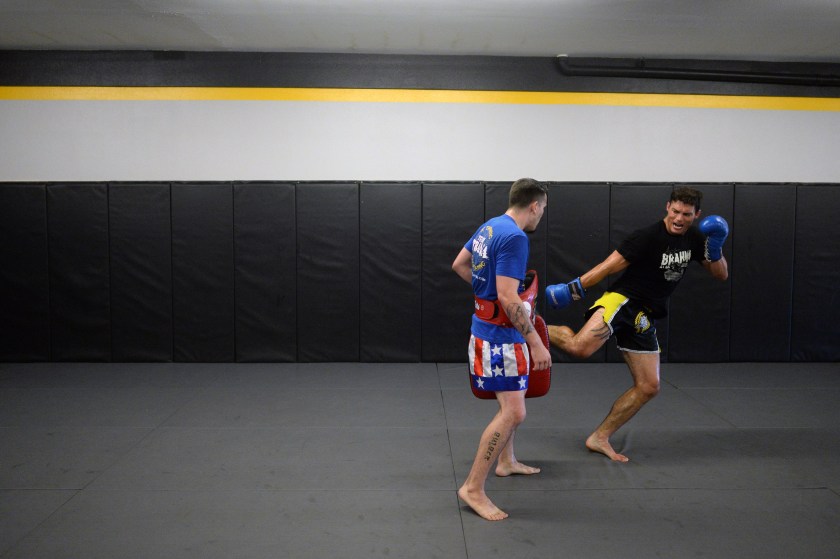
An introduction to Muay Thai
There’s a reason they call it “the art of eight limbs.” The practice, which originated in the 19th-century, sources just about every weapon the body has at its disposal: fists, elbows, knees and shins. It demands strength, flexibility, endurance, discipline, focus, memory and intuition. It isn’t just a full-body workout. It’s full-brain.
Still, there are some critical differences between Thailand’s humid, intense, at-times life or death circuit and the goings-on at the studio a couple towns over from you. Over there, trainees get one-on-one instruction every day. A typical session can last three hours or more. Coaches become surrogate parents. But in the United States, Wolcott says, “Most practitioners do it for fun or fitness. The class structure reflects that style of training, coaches teach group classes, and students hold pads for each other. Training may be an hour or two long.”
At a typical class in the States, students can expect a structured session that incorporates warm-up (jump rope, shadowboxing), technique instruction, partner drills, and conditioning exercises. Students pair up and practice strikes using Thai pads, focus mitts, or heavy bags.
Richard Sison, a martial arts expert with 20 years of experience learning and teaching Muay Thai (he also writes about the sport here,) calls it the best martial art for self-defense. “You learn to protect yourself at all ranges, from distance striking with punching and kicking, to close-range fighting with elbows and knees strikes. “
Trainees eventually graduate to light sparring, supervised by an instructor, where they apply what they’ve learned in a more realistic setting. This, Sison says, is where Muay Thai’s “clinching techniques” set it apart. “Unlike kickboxing, Muay Thai allows you to grapple and control an opponent in close quarters. So you can deploy utilize knee strikes, elbows, and sweeps in addition to punches, kicks, and clinch holds. This gives practitioners options for offense…making it a versatile martial art that can counter the limits of other martial arts.”
All that time spent getting into fighting shape, gets classes into good shape, period; sessions usually end with a conditioning segment, which may include exercises like push-ups, sit-ups, squats, and sprints to build strength and stamina.
The 21st-century has been kind
If you’re interested, you’re arriving at the right time. Muay Thai’s surged over the last 20 years, as practitioners, gyms, and competitions have become more popular around the world over. (Living in New York, I have over a dozen to choose from within a few square miles.) Organizations such as the World Muay Thai Council (WMC), the International Federation of Muay Thai Associations (IFMA), and Thai Fight have slowly standardized the sport’s rules, regulations, and weight classes, providing an improved framework for the sport’s growth and development.
There’s still a ways to go. The professional circuit has its question marks. But sometime soon, Muay Thai could even hit the Olympics. This past January, USA Muay Thai received official approval from the United States Olympic & Paralympic Committee, which gives the sport an inside shot at debuting at the Los Angeles Games in 2028. And this year, Muay Thai will feature at the European Games, in Krakow, Poland.
Too violent?
According to Sison, there are three misconceptions that continue to swirl around Muay Thai: it’s too violent, it’s only for those who fight competitively and it attracts individuals with aggressive personalities.
He offers some context: “As a coach, the worst possible outcome is for my students to become injured. That could stall their development or even cause them to quit the sport. All practitioners are trained to control their techniques during sparring sessions, to avoid unnecessary harm.”
To be fair, the sport does have its uniquely unpleasant injuries: bruised shins, sprained wrists and stiff necks among them. But these maladies depend on the severity of your sparring. Chances are, you won’t be taking the sport as seriously as a Muay Thai legend like Buakaw Banchamek, who’s famously kicked down banana trees with his shins, in the belief that micro-fractures harden his shins and permanently diffuse their pain receptors to future blows in the ring.
If you’re just going to the studio two times a week, though, expect the usual soreness, fatigue and injury risk of any contact sport. It’s unlikely your sparring partners will be clinching your neck often enough to induce the extraordinary soreness that most professional fighters deal with.
And besides, Muay Thai’s “violence” is useful in itself. The martial art’s various strikes and defensive maneuvers are highly effective in real-world, self-defense situations, should the need ever arise. Sison says: “It isn’t about promoting aggression. It’s about mastering techniques, developing focus, enhancing physical fitness, and cultivating mental strength.
Takeaways from Team USA
Erin Clayton, a member of Team USA’s Muay Thai program, says the sport has put her in the best shape of her life — physically and mentally.
She balances her training with a part-time remote job in tech, splitting her time between Los Angeles and Santa Barbara, where her husband lives. It’s fair to say no one else at her firm has beaten a Muay Ying in international competition. Clayton was kind enough to offer her top takeaways after eight years of training in Muay Thai:
- On humble beginnings: “My husband was a personal trainer when we first started dating and he was training me, but it was mainly strength training. I asked him for a fun workout to improve my cardio and he suggested Muay Thai. He had done it for a few months a few years before and he said ‘You played soccer, you like kicking things. You might like this.’”
- On physical transformation: “I am much stronger and faster at 30-years-old than I was at 16-years-old.”
- On overcoming self-doubt: “Muay Thai’s taught me how important self-belief is. I’ve been able to apply it in other parts of my life, like leaving a comfortable full-time job without a safety net. I had to believe that I would figure it out.”
- On sportsmanship: “This sport is rooted in respect. You’re trying to hurt the person sharing the ring with you, but you respect them. Some other combat sports have a lot of trash-talking, but in Muay Thai, that’s actually pretty frowned upon.”
- On getting into it: “When you push yourself, you are going to learn so much a You don’t have to compete, but you should challenge yourself in the sport — try sparring even if it seems scary at first. As for helping others, I think that is so important to create a community people want to be apart of. You will also grow your craft as you help others.”
Confidence and camaraderie
Ultimately, Muay Thai experts agree, the sport won’t just whip you into shape or hone your sense of self-defense…it also has the capacity to make you happier, if you’ll only let it.
“Muay Thai’s benefits are beyond physical,” Sison says. “About five years ago, a student joined my Muay Thai class with little to no prior martial arts experience. He also struggled with low self-confidence in his personal life and work. When he first came in, he was quiet and shy, but after months, he came out of his shell, and I realized just how funny he is.”
At a time when adults are more lonely and sedentary than ever — so many of us pining for purpose, searching for something to belong to — a martial art like Muay Thai paints a compelling picture of confidence and camaraderie. “If you open your heart to Muay Thai, it will take you places,” Wolcott says. “You won’t show up to work on a Monday morning and expect to find anyone else talking about the weekend’s fights. But when you do meet someone else who loves Muay Thai, it’s easy to form a bond with that person. You’re two of a kind.”
The Charge will help you move better, think clearer and stay in the game longer. Subscribe to our wellness newsletter today.
